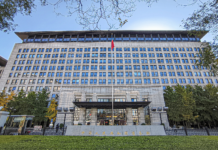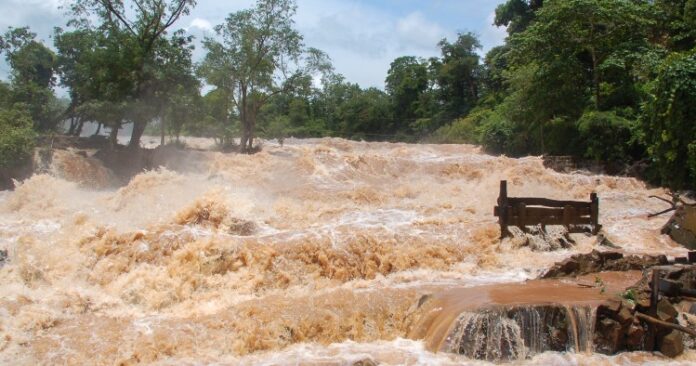Serious flooding in Pakistan has affected millions of people and has put them in a very precarious position. Due to the floods, recent torrential rains in the majority of areas in Pakistan have killed thousands of people and destroyed animals and properties worth billions of rupees. Donations will undoubtedly give survivors immediate relief in the form of supplies (food, shelter, water, and medicine), but long-term recovery is also necessary to aid flood-affected families in recovering and rebuilding.
A long-term policy is required to avoid such situations. Massive floods have destroyed the majority of districts across Pakistan, turning them into inland seas as the waters tore away mountainsides, washed buildings from their foundations, and raged across the countryside. The majority of the country was suffering from terrible rain, which later turned out to be a scourge. The poor communities could be seen sobbing as they observed how the massive rains had destroyed their entire way of life and their homes. Due to the unusual amount of rain in Pakistan, the already vulnerable infrastructure of the provinces of Sindh and Balochistan was in serious danger. Similar to that, an unwelcome tragedy also struck South Punjab, the neglected region of Punjab.
Sustainable development and proper water management must be the only consideration in local and regional planning. The prime goal for our government should be climate change adaptation and mitigation. Disaster management authorities need to evaluate their procedures for disaster mitigation and preparedness. Local officials should take responsibility for their actions and help flood victims by visiting their villages because leadership to handle such a crisis is urgently needed
Only after a period of five to six days, when most of the harm had already been done, did this type of serious issue gain traction in media outlets. However, there are ongoing rescue operations around the nation in an unorganized form. It will take years to repair the damage, which is more serious than the effects of the 2010 floods and the 2005 earthquake. After experiencing this type of natural disaster, it is essential to identify significant flaws in our system that could not resist the destruction, and suggest some potential improvements.
One of the loopholes in our system is poor infrastructure development due to short-term policies. Sadly, the long-term development strategy for cities has not been put into action. The major thoroughfares and arteries appear to flow like a valley after being flooded by only a brief period of rain lasting between 30 and 50 minutes. People must therefore navigate obstacles as these arteries become impassable to motor vehicles.
The illegal construction of homes and flats on already congested rivers was also permitted by the building control authorities in conflict with real estate owners, substantially restricting the flow of sewage water. Therefore, the public has accepted the flooding of highways with sewage water as the new normal without realizing the risks that water-borne diseases represent to them.
Climate change on the backburner. When the country does not prioritize the complex phenomenon of climate change and puts its entire energy on mudslinging, doom and gloom are in sight. I still wonder why we do not treat climate change as an economic and security threat when it is threatening us in the form of an unprecedented catastrophe. Our obsession with just making climate change policy and mentioning climate change as a non-traditional security threat in national security policy documents needs to be stopped. Rather than this, it is high time to put our energies into the materialization of these policy measures with a core focus on inter-departmental coordination and a whole of a governmental approach that will lead to trickle-down effects of major policy decisions on the masses.
There is zero contingency plan. There is no contingency plan because we have a propensity to believe that managing a catastrophe should be done reactively rather than anticipatorily. When a predictable disaster is predicted in industrialized nations, the entire governmental apparatus goes into emergency mode to avert the disaster. However, in Pakistan, the government doesn’t take notice until a calamity occurs. In light of the fact that disaster preparedness and evacuation planning are their area of expertise, this raises concerns about the role of the federal and provincial disaster management authorities.
Then there are uncoordinated relief efforts. As relief efforts are underway in various parts of the nation, it is clear that each donor agency is focusing on its own relief initiatives without any shared mechanism of coordination, making it difficult to concentrate on the proper distribution of perishable goods and monetary donations with no chance of their being siphoned off. In light of this, a platform like the National Command and Operation Center (NCOC) is essential.
Then there is absenteeism of feudal lords and local politicians. Local politicians and the feudal lords of that region engage the populace for political support as election season approaches. However, these politicians live opulent lives in the upscale areas of Dubai and the USA, thanks to the support of their constituents, whenever a catastrophe befalls the underprivileged. Even if they do get there, what they do is for picture shoots and giving out money in peanuts, which is itself an insult to the already impacted populace.
There is a paucity of health camps. In addition to setting up relief camps, it’s also important to set up health camps for ongoing health monitoring of flood victims because they’re living in confined areas and there’s a risk of disease epidemics. Dengue and malaria are reportedly spreading like wildfire in areas impacted by the floods. Consequently, it is important to include the health aspect of disaster management.
The question is what should be done next? It is now time to shed light on some potential fixes after revealing these serious flaws. First, sustainable development and proper water management must be the only consideration in local and regional planning. Second, the prime goal for our government should be climate change adaptation and mitigation. Third, disaster management authorities need to evaluate their procedures for disaster mitigation and preparedness. Last but not least, local officials should take responsibility for their actions and help flood victims by visiting their villages because leadership to handle such a crisis is urgently needed.






















